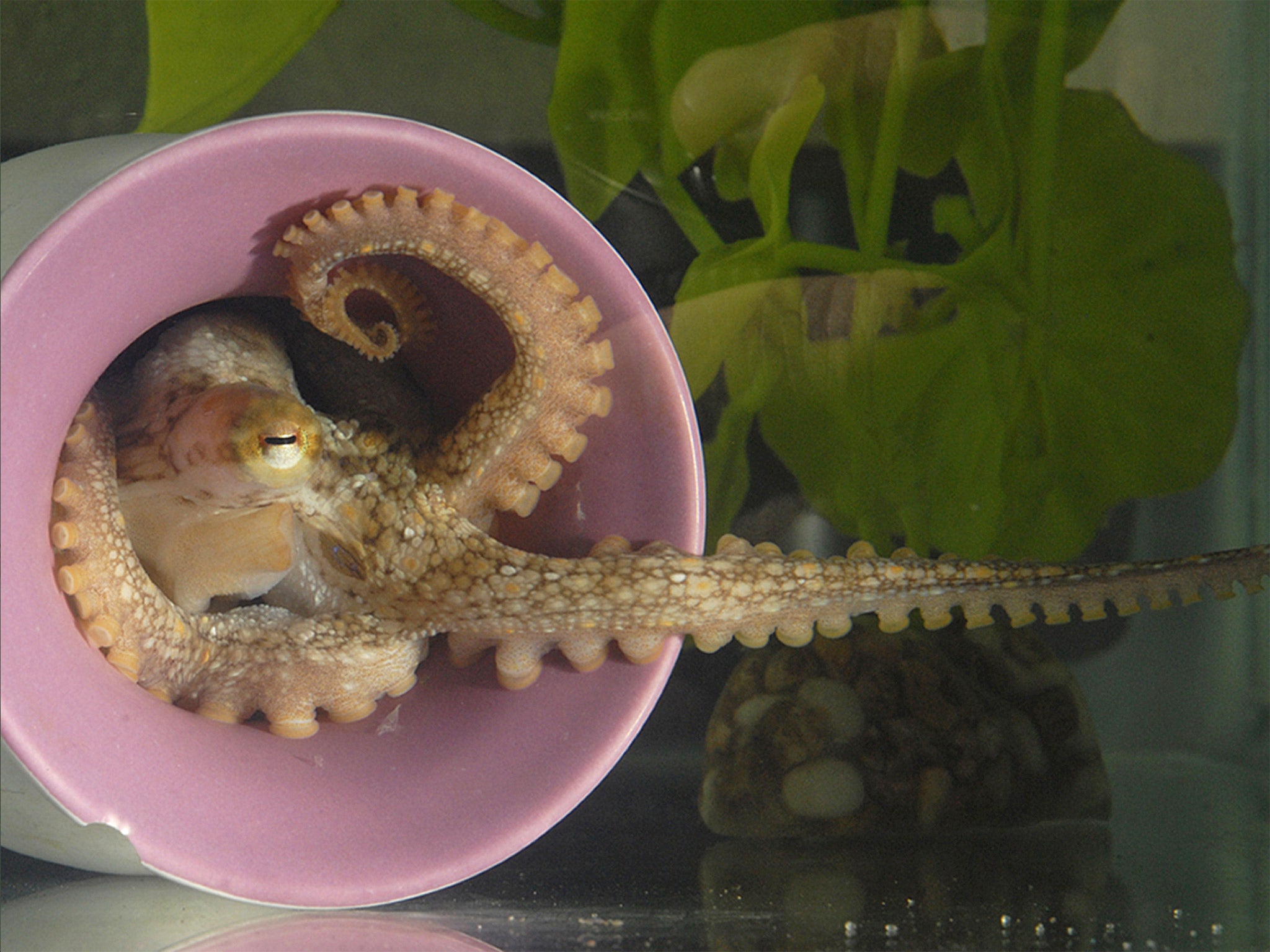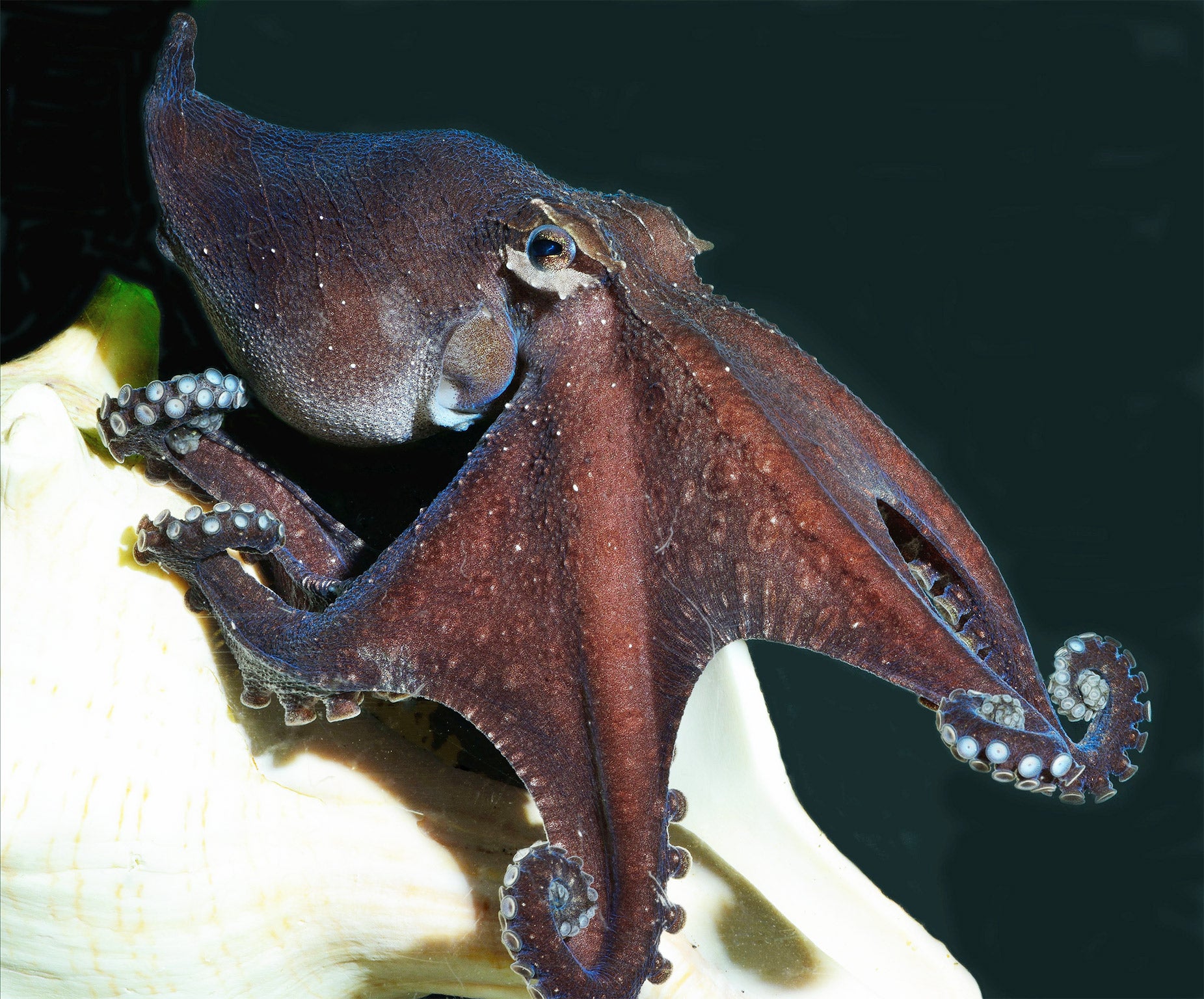Armed with 10,000 more genes than humans: Scientists hail the intelligence of the octopus
Scientists have decoded the genome of the octopus and have discovered just how different it is to other intelligent creatures

Your support helps us to tell the story
From reproductive rights to climate change to Big Tech, The Independent is on the ground when the story is developing. Whether it's investigating the financials of Elon Musk's pro-Trump PAC or producing our latest documentary, 'The A Word', which shines a light on the American women fighting for reproductive rights, we know how important it is to parse out the facts from the messaging.
At such a critical moment in US history, we need reporters on the ground. Your donation allows us to keep sending journalists to speak to both sides of the story.
The Independent is trusted by Americans across the entire political spectrum. And unlike many other quality news outlets, we choose not to lock Americans out of our reporting and analysis with paywalls. We believe quality journalism should be available to everyone, paid for by those who can afford it.
Your support makes all the difference.With its eight tentacles, large eyes and intelligent demeanour, it has been likened to an alien form of life. Now scientists have decoded the genome of the octopus and have discovered just how different it is to other intelligent creatures both on land and sea.
The octopus may not have a backbone but when kept in captivity it is clever enough to devise ways of escaping from a fish tank. It is so intelligent that it is the only invertebrate to be given special protection under the UK law governing the licensing of animal experiments.
Yet the intelligence of the octopus evolved far earlier than that of the “higher” vertebrates and its genome holds the secrets of how this happened, according to the researchers who have sequenced the entire 2.7 billion “letters” of the octopus’s genetic code – the first genome within the cephalopod group of predatory molluscs, such as the squid, cuttlefish and nautilus.
“The octopus appears to be utterly different from all other animals, even other molluscs, with its eight prehensile arms, its large brain and its clever problem-solving capabilities,” said Clifton Ragsdale of the University of Chicago, one of the leaders of the international genome-sequencing project.
“The last British zoologist Martin Wells [grandson of H.G. Wells and renown cephalopod expert] said the octopus is an alien. In this sense, then, our study describes the first sequenced genome from an alien,” Dr Ragsdale said.
“It is an incredible resource that opens up new questions that could not have been asked before about these remarkable animals,” he said.
The genome has already thrown up genes that are probably involved in the unique adaptive coloration of the octopus, which allows it to change its skin colour to match its background.
“We've found hundreds of novel genes that don't have counterparts in other animals and may be involved in this unique camouflage process,” Dr Rokhsar said.
The veteran Cambridge University Nobel laureate Sydney Brenner, who initiated the octopus-genome project, said understanding the genes that are common to the cephalopods will help to define what it means to be one of them, and so shed light on how the primordial intelligence of the octopus evolved when they first emerged in the oceans more than 400 million years ago – some 230 million years before the mammals.
“They were the first intelligent beings on the planet. The reason for looking broadly at several different types of cephalopods is to see what is conserved among them. What is similar among all cephalopods is probably important to being a cephalopod,” said Dr Brenner, now the founding president of the Okinawa Institute of Science and Technology Graduate University in Japan.

The study, published in the journal Nature, revealed that despite having a genome slightly smaller than that of humans, the octopus has about 10,000 more genes – a total of 33,000 – an expansion that the scientists attribute to the widespread shuffling of the genome and the appearance of novel genes that helped the octopus to survive.
The most notable expansion was in a set of genes known as the protocadherins which are considered essential for developing nerve cells and the interactions between these neurons. The octopus genome contains 168 protocadherin genes, which is 10 times as many as other invertebrates and more than twice as many as mammals.
While the neurons of mammals are sheathed in an insulating fatty envelope, called myelin, this is absent in the octopus, which probably puts a premium on short-range interactions within the cephalopod’s nervous system, the scientists suggested.
“The octopus nervous system is organized in a totally different way from ours: The central brain surrounds the oesophagus [throat], which is typical of invertebrates, but it also has groups of neurons in the arms that can work relatively autonomously, plus huge optic lobes involved in vision,” said Daniel Rokhsar of the University of California at Berkeley, who co-led the project.
“The sequencing was an opportunity to look at the genome and see what we can learn about the unique brain and morphology of the octopus,” Professor Rokhsar said.
“We have already found several gene types that are dramatically expanded in the octopus relative to other vertebrates, and we think they play a critical role allowing a new level of neuronal complexity to be reached in invertebrates,” he said.
Stealthy hunter: Pacific striped octopus
A tap on the shoulder usually means your time is up, and this is certainly true of any shrimp in the vicinity of the Pacific striped octopus, which has devised an ingenious method of capturing its prey.
On spying a shrimp, the octopus approaches close enough to tap it on the opposite side of its body so that the startled creature jumps into the octopus’s eight arms.
“I’ve never seen anything like it,” said Roy Caldwell, a professor of integrative biology at the University of California, Berkeley.
“Octopuses typically pounce on their prey or poke around in holes until they find something.
“When this octopus sees a shrimp at a distance, it compresses itself and creeps up.”
The Pacific striped octopus exhibits another novel behaviour, documented in a study published in the online journal PlosOne.
While most octopuses have sex at a distance, probably because the females of these solitary species are apt to start eating their male partners if they come too close, the Pacific striped octopus engages in full-frontal sex.
Each octopus of a copulating pair grasps the other’s arms sucker-to-sucker and then starts to mate eye-to-eye, beak-to-beak in a frenzy that the scientists have described as “rough sex”.
Join our commenting forum
Join thought-provoking conversations, follow other Independent readers and see their replies
Comments